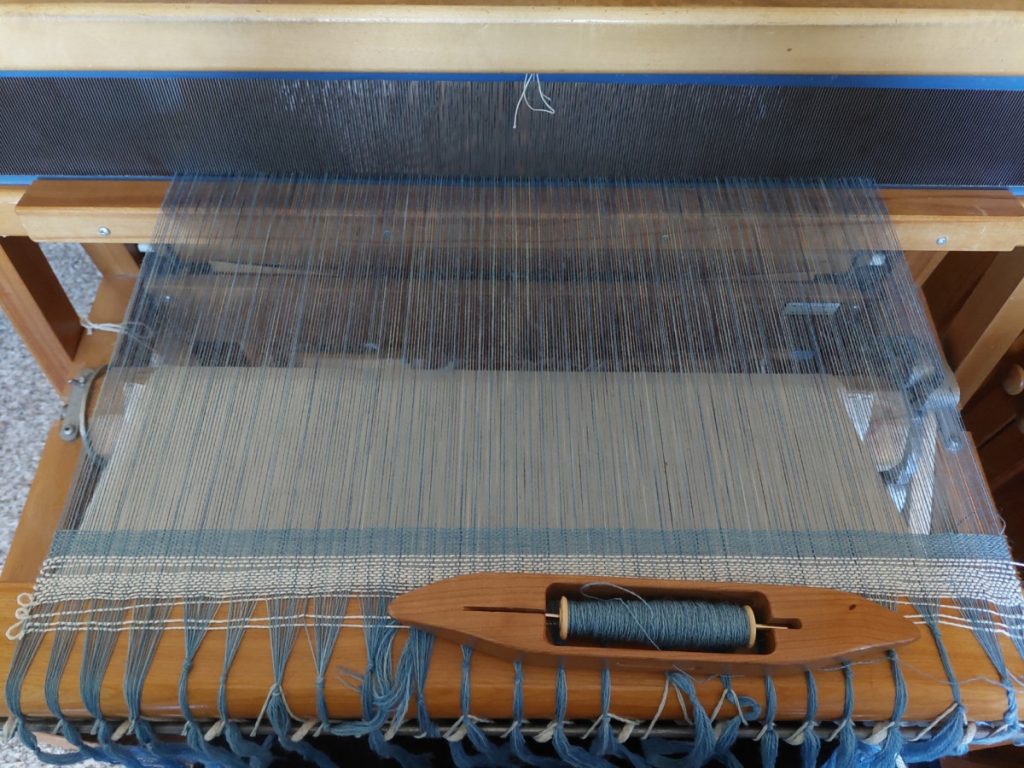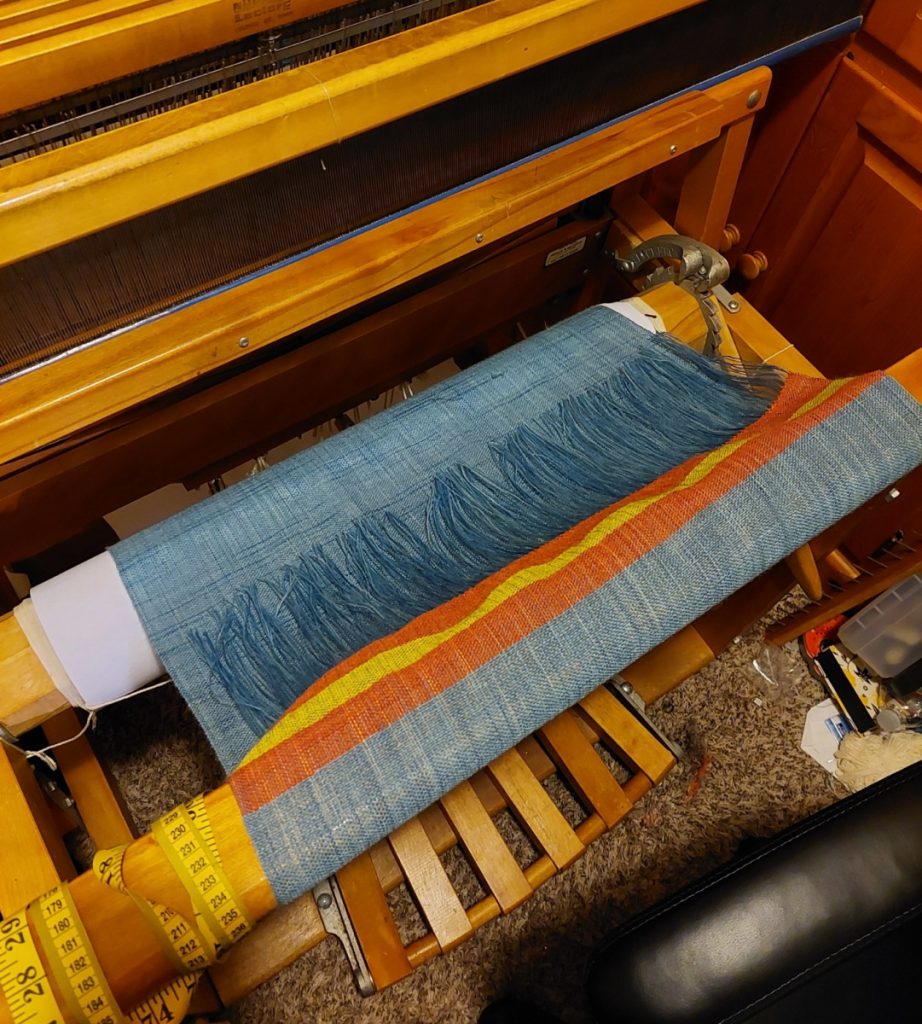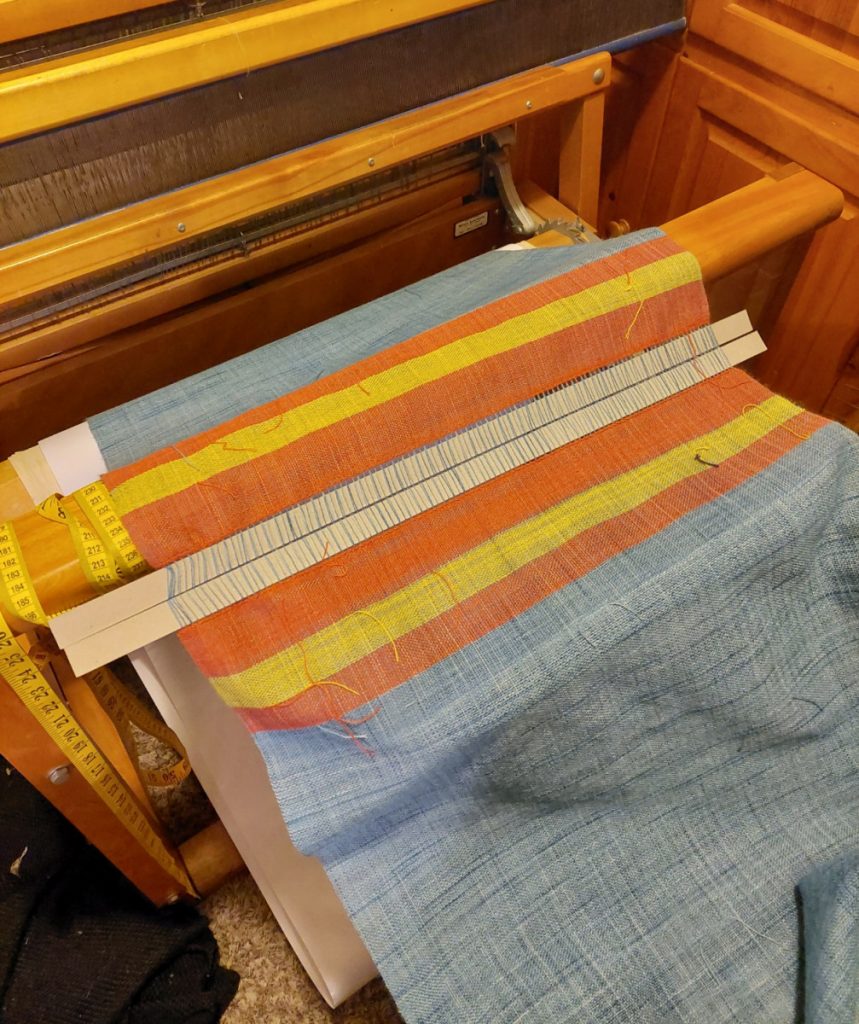I had good news and bad news this week. First, the good news: I finished the first two panels! The tension issues never really went away, but I persevered and made it through the second panel. It was terribly satisfying to unroll the panels off of the front beam and cut them off the loom. I bought new scissors specially for fabric so I wouldn’t make a mess when cutting them off.
The bad news: these are the only large panels I will weave. As I neared the end of the second panel, I quickly realized that I wasn’t going to have enough weft yarn to do another panel, let alone two. I’m somewhat perplexed on how this happened, but going forward whatever calculation I do to determine the amount of weft and warp, I’m going to double it to make sure I have enough. Looking at the panels, I can see that the sett I wove at is not the one I used in my calculations; I used a 12 wpi (wraps per inch) for calculating the weft, but in practice it was more like 15-17. But, if the panels actually had only 12 weft threads per inch, the fabric would have been like gauze and not a balanced weave at all. Like I said, I’m still technically a beginner. It’s a lesson learned.
So my chiton will now be a himation. A himation is a long rectangular piece of fabric that was worn in different ways, depending on the gender of the person. Men, starting in the 6th century, would wear a himation as their main garment and women would wear one whenever they wore a chiton. It would have been strange to wear a chiton without a himation. The himation was usually made of wool and there were proper and improper ways to wear it, especially for men. Women might wear a himation as a veil, use it as a baby carrier, and was even used by dancers .
I had some blue weft left, so I decided to warp the loom again and weave the rest of the blue yarn into a smaller panel to sew between the other two larger panels. I didn’t want to sew the two panels together as-is, since there would have been two sets of stripes in the middle with only one set on the ends; I felt it would look better stylistically to have a blue panel to break up the stripes. So I cleaned up the loom of scrap yarn and proceeded to warp it again. Sadly, the warping process was no faster even though it was my second time doing it. This time though, I took off a part of the front of the loom (the bottom part that holds the reed) so I could reach the heddles easier and not sit in a very awkward position. It was a piece that isn’t really meant to come off, but I was inspired by the memory of the terrible back-ache I had the first time I dressed the loom.

Once I finished dressing the loom, I wound up the rest of the blue yarn onto bobbins and began weaving. It was evident very quickly that I had made the right call – I didn’t finish the middle panel this week, but I could tell that I would have been upset had I attempted to weave the other two panels as originally planned.




